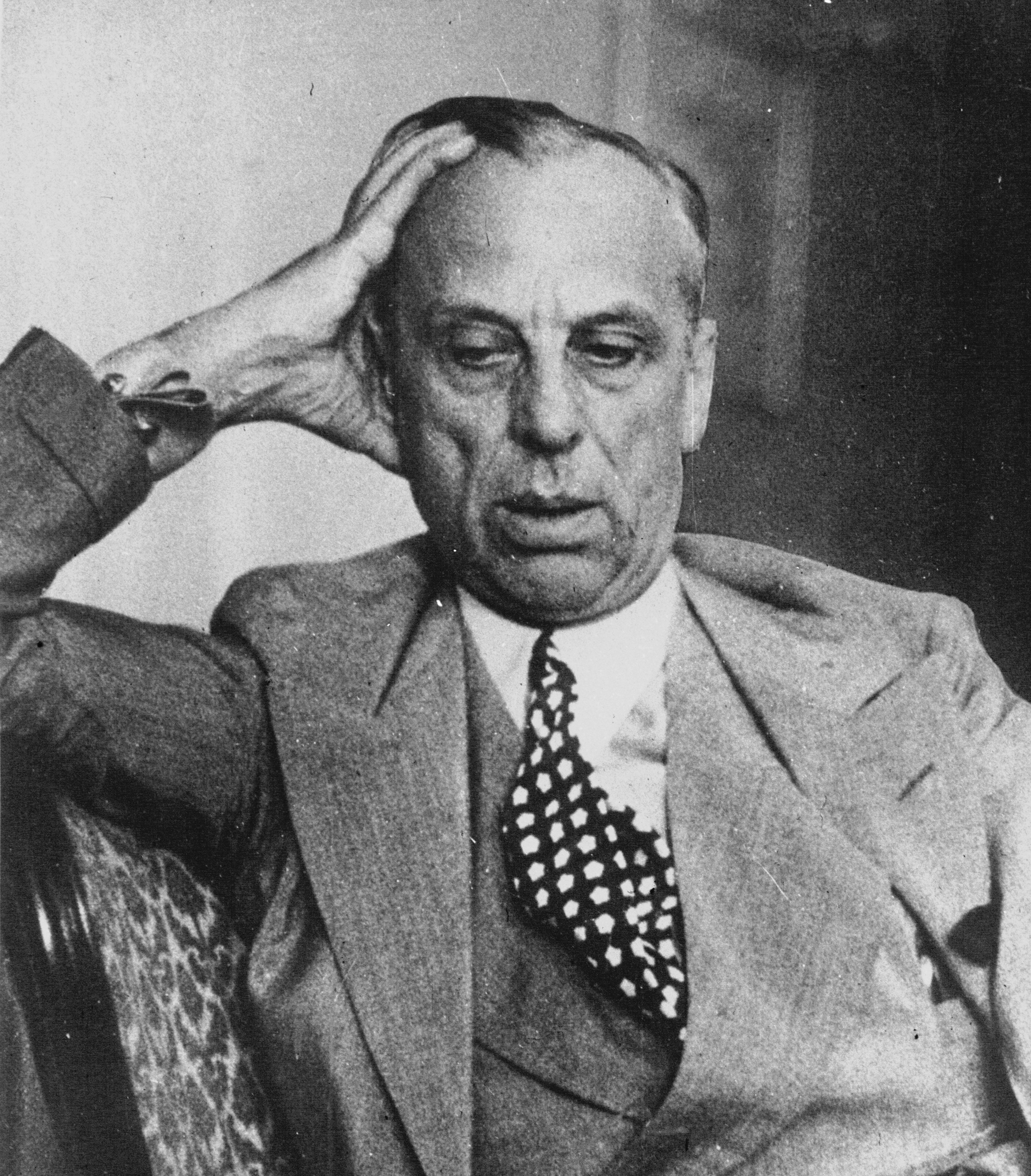Variant: There has to be this pioneer, the individual who has the courage, the ambition to overcome the obstacles that always develop when one tries to do something worth while, especially when it is new and different.
Source: Adventures of a White-Collar Man. 1941, p. 127
Famous Alfred P. Sloan Quotes
Alfred P. Sloan (1936); Cited in: " OBITUARY : Alfred P. Sloan Jr. Dead at 90; G.M. Leader and Philanthropist http://www.nytimes.com/learning/general/onthisday/bday/0523.html," the New York Times, February 18, 1966. This article comments:
Toward the end of the year [1936] Mr. Sloan made a substantial foray into philanthropy by endowing the Alfred P. Sloan Foundation with $10-million.
Source: "The Broadened Responsibilities of Industry's Executive," 1936, p. 358; Also in Sloan & Sparkes (1941, 145); Partly cited in: Roland Marchand (1997, p. 83)
Source: My Years with General Motors, 1963, p. 49
Alfred P. Sloan in: The Magazine of Wall Street, (1927), Vol. 41, p. 480
Alfred P. Sloan Quotes
Source: "The Broadened Responsibilities of Industry's Executive," 1936, p. 362
as cited in: Thurman Arnold (2000, 72-73).
New York Times interview, 1935
Source: My Years with General Motors, 1963, p. 140
“Take my assets — but leave me my organization and in five years I'll have it all back.”
Alfred P. Sloan in the 1920s, cited in: Thomas S. Bateman, Scott Snell (1999), Management: building competitive advantage. p. 276
“The business of business is business.”
Widely attributed to Milton Friedman, and sometimes cited as being in his work Capitalism and Freedom (1962) this is also attributed to Alfred P. Sloan, sometimes with citation of a statement of 1964, but sometimes with attestations to his use of it as a motto as early as 1923.
Disputed
Alfred P. Sloan in The Turning Wheel, 1934
Source: "The Broadened Responsibilities of Industry's Executive," 1936, p. 351; Lead paragraph.
Source: Adventures of a White-Collar Man. 1941, p. 144
Source: My Years with General Motors, 1963, p. 438
Alfred P. Sloan. quoted in: " Alfred Sloan, Guru http://www.economist.com/node/13047099," economist.com, Jan. 30, 2009.
Source: Alfred P. Sloan in The Turning Wheel, 1934, p. 331-2: Speech by President Alfred P. Sloan, Jr., delivered to representatives of the automotive press at the Proving Ground on September 28, 1927.
Alfred P. Sloan, quoted in: Forbes, Forbes Incorporated, (1959), p. 54
Source: Adventures of a White-Collar Man. 1941, p. 140
Source: Adventures of a White-Collar Man. 1941, p. 137
Source: My Years with General Motors, 1963, p. 149
Source: Adventures of a White-Collar Man. 1941, p. 10; Published earlier in: Drugs, Oils & Paints, (1939). Vol. 54-55, p. 335
Source: My Years with General Motors, 1963, p. 48-49
Alfred P. Sloan Jr. (June 1940) cited in: David Farber (2003). Sloan Rules: Alfred P. Sloan and the Triumph of General Motors. p. 225
Source: Adventures of a White-Collar Man. 1941, p. 13-14, as cited in: William Pelfrey (2006), Billy, Alfred, and General Motors: The Story of Two Unique Men, a Legendary Company, and a Remarkable Time in American History. p. 30-31; Sloan describing the Hyatt roller bearing product;
Source: Alfred P. Sloan in The Turning Wheel, 1934, p. 210. Sloan in his Proving Ground address in 1927 to automobile editors, in discussing the so-called saturation point.
Source: My Years with General Motors, 1963, p. 512 (2015 edition)
Source: My Years with General Motors, 1963, p. 15 (2015 edition)
“It is astonishing what you can do when you have a lot of energy, ambition and plenty of ignorance.”
Source: Adventures of a White-Collar Man. 1941, p. 18
Source: Alfred P. Sloan in The Turning Wheel, 1934, p. 185-6; Retrospective vein President Alfred P. Sloan, Jr., addressing the automobile editors of American newspapers at the Proving Ground at Milford, Michigan in 1927.
Source: My Years with General Motors, 1963, p. 48
Alfred P. Sloan, in: General Motors, News and Views. (1945), p. 1;
Source: My Years with General Motors, 1963, p. 37
New York Times interview, 1935
Source: My Years with General Motors, 1963, p. 387 (1964 edition)
“Bedside manners are no substitute for the right diagnosis.”
Alfred P. Sloan, quoted in: The Almanac of Quotable Quotes from 1990. (1991), p. 103
Source: Adventures of a White-Collar Man. 1941, p. 5 ; About his first job at the , where a year later Sloan would take control.
Source: Alfred P. Sloan in The Turning Wheel, 1934, p. 343
Alfred P. Sloan in: Industrial Digest and Commidities and Finance, (1925), Vol. 4. p. 16
Alfred P. Sloan. quoted in: John Bourne (2000), Learning Effectiveness and Faculty Satisfaction. p. 11
Source: Alfred P. Sloan in The Turning Wheel, 1934, p. 332-3: Speech by President Alfred P. Sloan, Jr., 1927 (II)
Source: Adventures of a White-Collar Man. 1941, p. 103
Cited in: Charles Cullen Chapman (1936), The development of American business and banking thought, 1913-1936. p. 265
New York Times interview, 1935
Source: My Years with General Motors, 1963, p. 169
Source: My Years with General Motors, 1963, p. 173 (2015 edition)
as cited in: Thurman Arnold. The Folklore of Capitalism. (2000), p. 72
New York Times interview, 1935
Source: My Years with General Motors, 1963, p. 20 (in 1964 edition)
